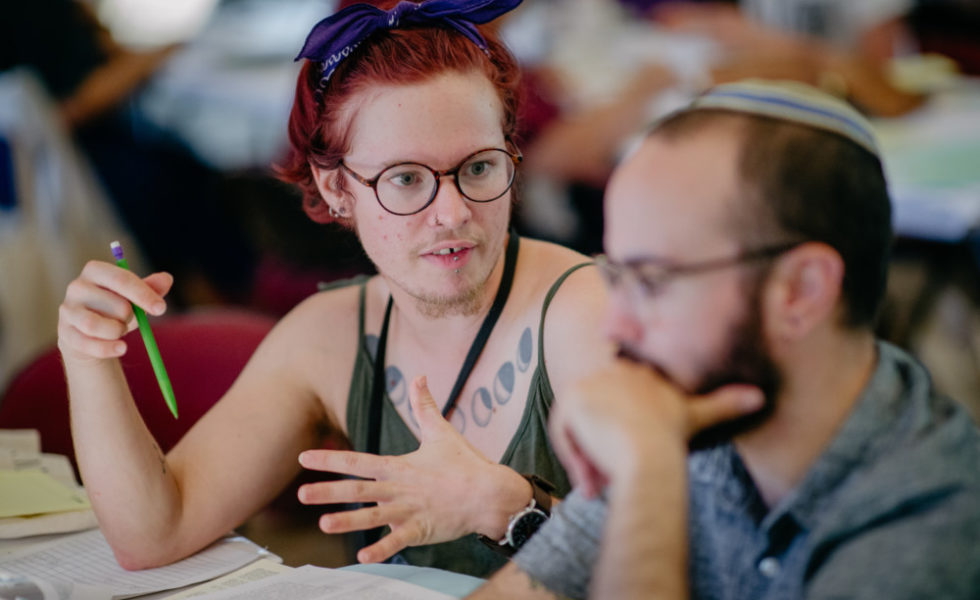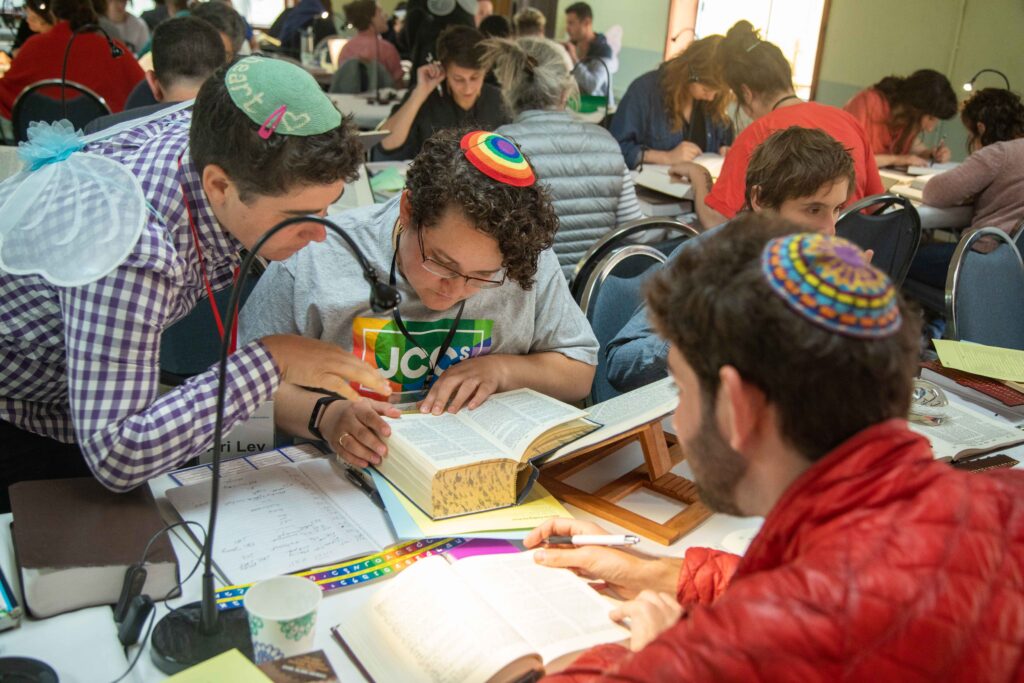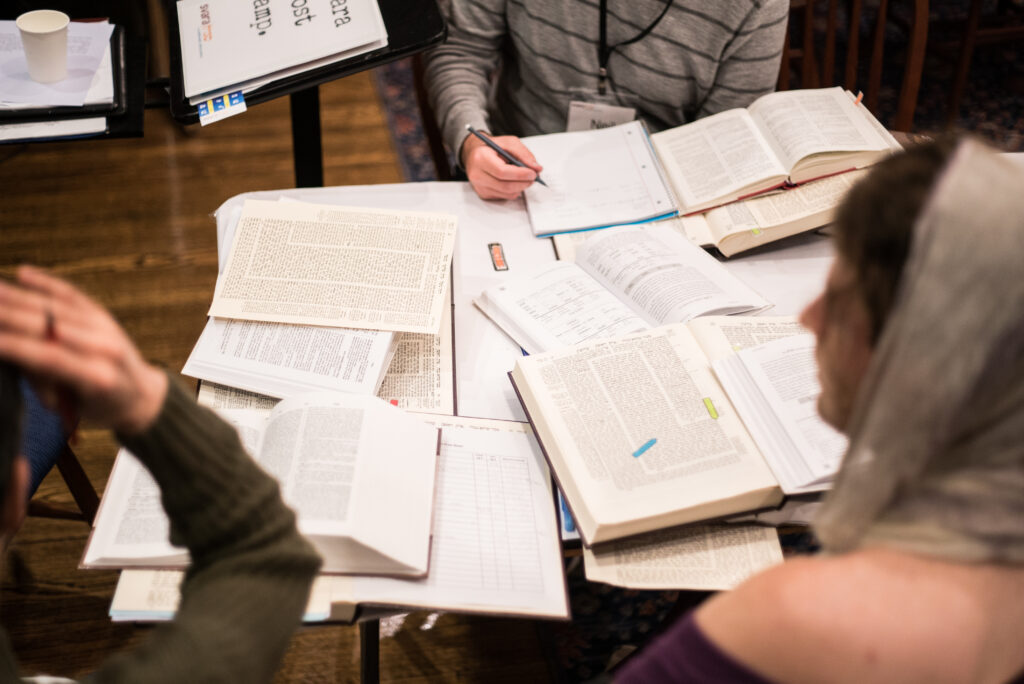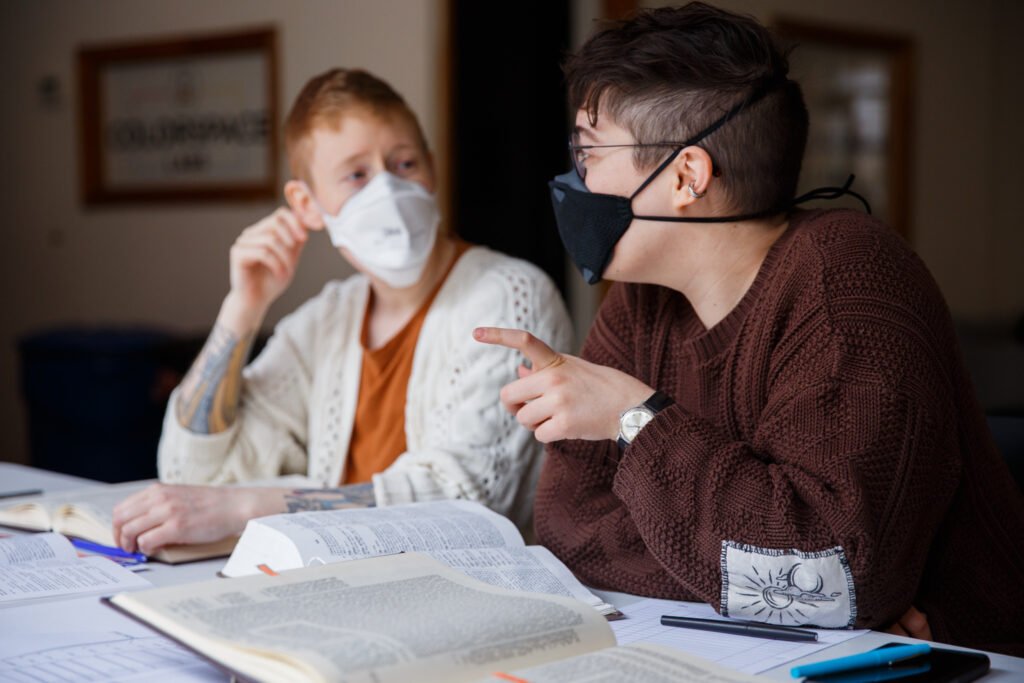The Talmud’s goal is to teach us how to tell more liberatory stories, and to help us become the people that we need to become to then live those stories out.
And it does this by creating in the learner an experience of ever-shifting perspective, purposely destabilizing us, training us for those inevitable life events which pull the floor out from under us, forcing us to shift our perspective ever wider, and asking us to change the way we see the past, sometimes radically, often uncomfortably, inevitably in ways which will mean loss for some of us, but ever greater and greater liberation for all of us. I’d like to share with you one of the thousands of stories the Talmud tells, of shifting perspective, of ancient inherited stories told and retold precisely in order to teach us how to let go of old stories and tell newer, bigger, more truthful and liberatory ones.
In this week’s Torah portion, we have the infamous passage about the wayward and rebellious son. Deuteronomy Chapter 21, beginning with verse 18, says:
If a man has a wayward and rebellious son who does not obey his father or his mother, and they chasten him, and [he still] does not listen to them,
then his father and his mother shall take hold of him and bring him out to the elders of his city and to the gate of his place. They shall say to the elders of his city, “This son of ours is wayward and rebellious; he does not obey us; he is a glutton and a drunkard.
All the men of his city shall pelt him with stones, and he shall die, and you shall eradicate the evil from amongst you; and all Israel shall hear, and fear.
So, how ya feelin’ about that??
Yeah, me, too. But first of all, let’s remember that, as cruel and archaic as that biblical text may seem to us now, this story was a major upgrade for its time in the ancient Near East where patria potestas, which grants a father the power over the life and death of his children, was the law of the land. That was the accepted norm, even, by all evidence, within our own community. But in comes the Torah as a first-round upgrade, saying: Well, not so fast. A father shall no longer be able to just out and out kill his child for no reason. Now, he’s going to have to a) have reasons (he doesn’t obey us, he doesn’t heed our voice after we’ve reprimanded him, etc.), and b) the father’s going to have to involve the elders of the town, and only they will be authorized to carry out the killing.
But, fast-forward 1,500 years to the Rabbis of the Talmud in the first few centuries of the Common Era, and even this extra step of having someone else step in to murder your wayward and rebellious kid now seemed unconscionable, and no longer our best guess at how God wanted us to deal with difficult teens. So, the Rabbis listened to their svara, their moral intuition, and with a little sleight of hand and creative, albeit forced reading of these verses, they interpreted up enough evidentiary requirements for such a killing to take place, that they made it essentially impossible to carry out.
First off, they said: The torah says “ben” and not “bat,” “son” not “daughter” (knowing full well that “ben” means “child” of any gender as often as it means “male child” when it appears in the Torah), so clearly, the Rabbis said, this verse only applies to boys not girls, eliminating 51% of the potential children who could be killed. Then they deduced, based on an even more outlandish read of the verses, that the eligibility period was only about three months after a boy’s bar mitzvah. Window closing, check.
And then they dealt with what behaviors the boy would have to engage in, during those three months, in order to qualify for wayward-and-rebellious status. Well, the Rabbis said, in order to qualify for such an unfortunate status, the boy would have to eat a certain precise amount of meat, and drink a certain precise amount of a particular, expensive, Italian wine, and have stolen the money to purchase those things from his father’s home (and nowhere else), and have eaten the meat and drunk the wine in someone else’s house (not his own), and what’s more–based on a ridiculously farfetched read of other words in the verses—both the mother and the father of this boy would have to be of precisely the same height and have the same appearance and exactly the same pitch of voice, and, well, you get the idea.
As I fully believe the authors of the Talmud intended their readers to do, most learners of this sugya are, by the end of this famous passage, chuckling at the obvious absurdity and heavy-handedness of the midrashic license taken to reach the interpretive conclusions that they portray as having been built into the biblical verses all along. And just as the passage brings most readers to the point of laughing out loud, the gemara wraps up the entire passage by concluding that, as a result of all those conditions needing to be met, ben sorer u’moreh, lo haya, v’lo atid lihiyot—“a stubborn and rebellious son never was and never will be.” We never have, they’re saying, and we never will, put this law into practice by causing physical harm to rebellious teenagers. And don’t worry, they’re saying, no difficult kid has ever been stoned according to the directive of this verse, no parent has ever brought such a child to the elders, and the elders have never carried out this Torah-sanctioned killing of any child.
Well, if that’s so, and God never actually meant for us to carry these verses out, the gemara then asks, why would God have even put them in the Torah in the first place? The gemara’s answer is even more radical: drosh v’kabel s’khar. Literally: Interpret and receive reward. In other words, God put those verses there so that you should interpret them out of existence, and then be rewarded for having done so.
With those three words, drosh v’kabel skhar, the Rabbis have turned the entire tradition–and our relationship to God and Torah—on its head. From that moment forward, the Torah would no longer be a simple guidebook for how God wants us to live that we are supposed to follow, verse for verse. You know what those three words—drosh v’kabel skhar—make the Torah? A treasure hunt! Basically a Where’s Waldo (with God-knows-how-many Waldos in there) of stuff God wants me to do and a bunch of other stuff God put in there with a red striped shirt, davka for me to find and know I’m not supposed to do—just to make sure I’m on my toes and sharpening up my svara. The Torah becomes a mandate to us to use our svara to suss out what systems of oppression–particularly those that come from our own tradition—need to be written out of existence, and then to do the work of making that happen.
Now, that’s a pretty big message and the Talmud could’ve stopped there. And most people learning this passage do stop there. But the gemara then does something even more radical, because it knows that merely writing systemic injustice out of our society is not only not enough, if done the wrong way it can create even greater harm by hiding the mechanisms and history of systemic change, and tying the hands of those who come after us, who will need to do the same kind of work in their time, on issues that are not even on our justice map.
So after this dramatic moment of declaring that the ben sorer u’moreh, the wayward and rebellious son, lo haya v’lo atid lihiyot, “never was and never will be,” in the very next line the gemara brings in Rabbi Yonatan, who then stands up and says—and in my imagination he is not merely saying but screaming—Ani r’itiv vi’yashavti al kivro! What do you mean a stubborn and rebellious son, the one the Torah told us to stone, never was and never will be?! Ani r’itiv vi’yashavti al kivro! I saw one, and I sat on his grave! Don’t try to tell me we never carried out this law. We certainly did! I saw that murdered kid with my own eyes! I sat on his grave! Don’t play fast and loose with history! And stop pretending that we’ve always been so forward-thinking. We damn well used to kill our children!
And Rabbi Yonatan should know.
You see, Rabbi Yonatan was a Kohen, a priest. And what do we know about kohanim and cemeteries? They are forbidden to enter them. With only one exception: A kohen may only enter a cemetery or be present at a gravesite for their seven most immediate family members: father, mother, sister, brother, husband, wife, child.
If Rabbi Yonatan was sitting on a grave of a stoned stubborn and rebellious son, it was most likely that of his own son…a son whom only he could have brought to the elders of the town to have stoned! “What do you mean: never was and never will be? I followed the rules! I did what the Torah told me to do! That’s what you told me God wanted me to do! And now you’re telling me I wasn’t supposed to do that?! That was the law! That was the story you told me!” Ani r’itiv v’yashavti on kivro…you can hear the pain, the anguish, the guilt, in his voice, and his insistence that we not erase the violence and pain of those murdered by the story we are now wiping off the history books.
The gemara’s editor could have left us with the self-congratulatory moment of lo haya v’lo atid li’hiyot, the squeaky clean legal fiction of “never was and never will be.” But what he knows is that having a legislative history of how we got from there to here is crucial. Why? Because you’re going to need it when going from where you are now to where you need to go tomorrow! You need to have precedents for having written out of existence the pain and the violence of what most definitely happened, the story that was in existence once—or else someone’s going to say to you: Oh no, you can’t write Leviticus 18:22—or heteronormativity, or patriarchy or racism or ableism, or anything else–out of existence because that’s real. The stubborn and rebellious son was written out of existence only because it never was practiced! But oh, no, says Rabbi Yonatan, this most certainly was practiced. It was real. And so was the death that it caused.
As we move our way through the month of Elul, and continue toward Rosh Hashanah and Yom Kippur, during this season of reflection, spiritual introspection, and stocktaking, let us look at our own stories—both personal and societal. What stories have we been telling ourselves which are no longer serving us? What stories are actually causing us harm? What old stories am I still telling myself—about myself, about my father, about my mother, about my child, about straight folk, about queer folk, about White folk, about Black folk, about those whom I haven’t even considered to even be in my story—that may be holding all of us in a place of suffering? What new story do I want to be a part of? Whose story do I want to be a part of? And what do I need to do to make that happen?
Teshuva is not about rewriting your history. It’s about acknowledging some of the most painful parts of our relationships, honoring and remembering the pain and the violence, and then saying “yes, this happened and it caused death,” and expanding the story so that it has the space to hold not only our painful past, but a more liberatory future, for all of us. May we all be empowered to reinterpret our tradition’s stories through the wide-angle lens of our pain, our loss, our insights, and our svara. Because traditions do teshuva, too. Traditions learn. We are not only its students, but its teachers. And, like Rabbi Yonatan, we can find our place in a new, more liberatory story.







